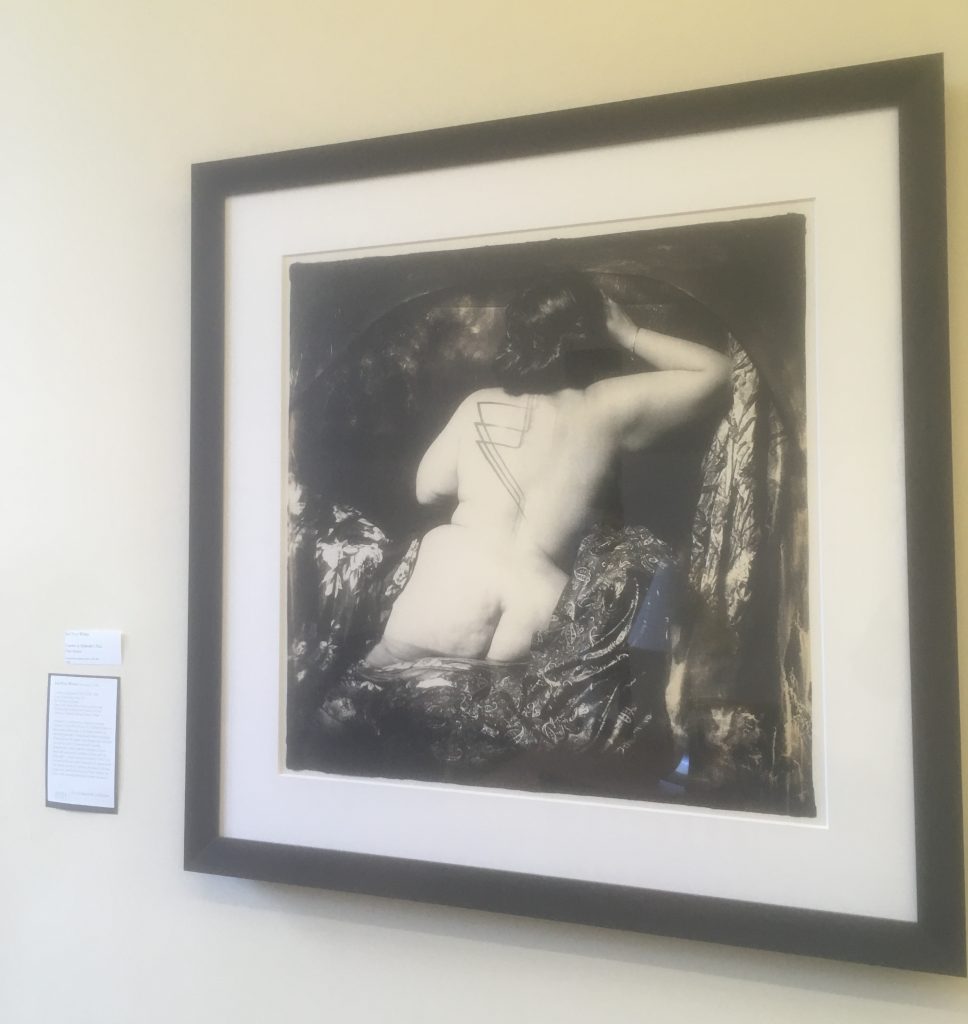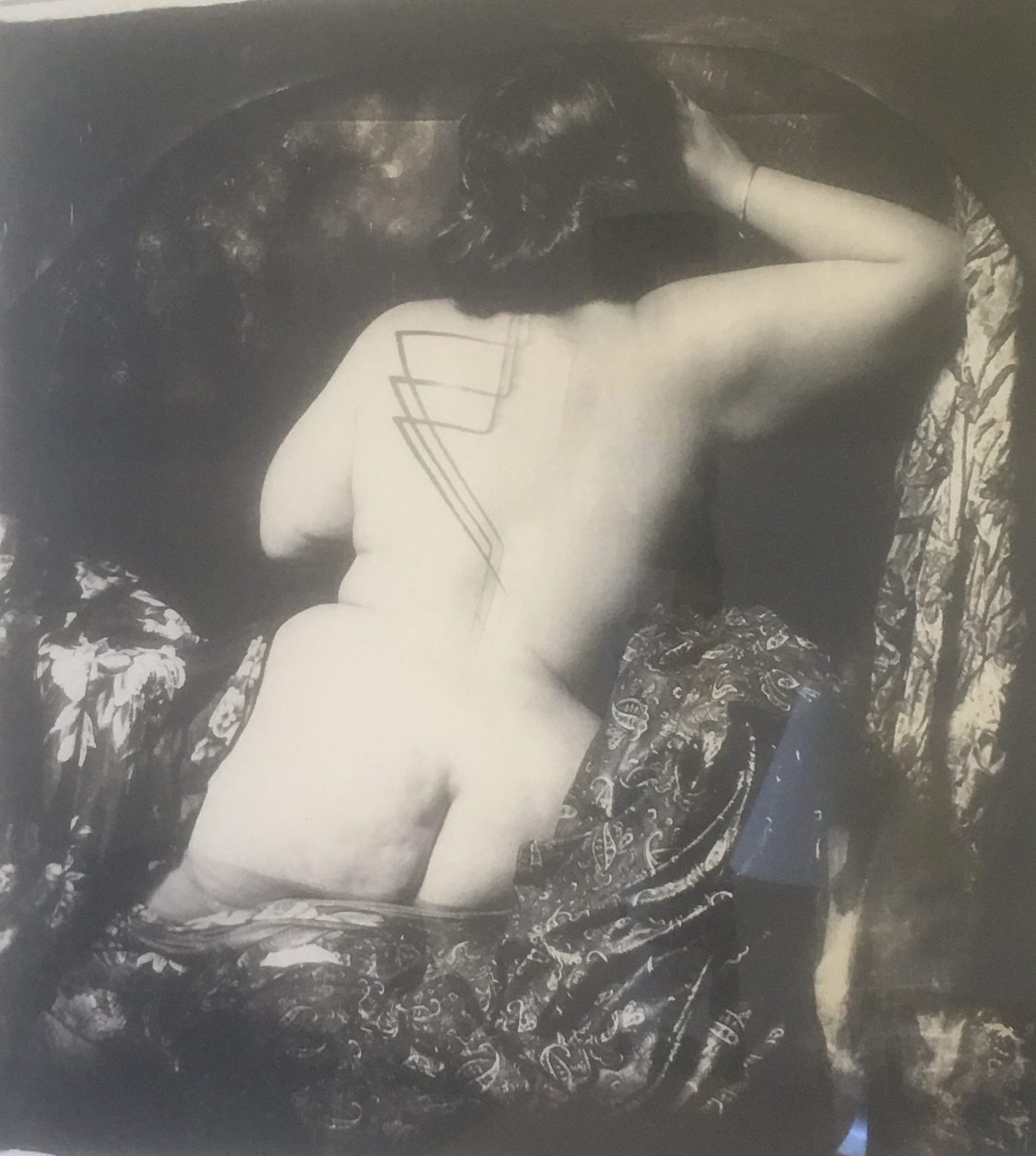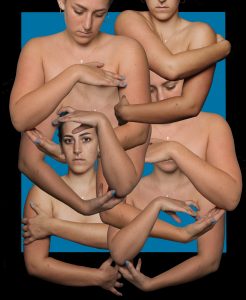Visual Analysis of Courbet in Rejlander’s Pool

Joel Peter Witkin’s work Courbet in Rejlander’s Pool (1985) is a square, black and white photograph. Surrounded by velvet darkness is the white nude woman who is facing away from the viewer. The only attributes with which we can identify her are her neatly coiled hair, the bracelet on her right wrist, and 3 lines which zig-zag down the left side of her back. She is relatively curvy with arms that slightly sag and creases where her hips meet her waist. The space she is in is unclear, we can see water coming up to the top of her legs, but that doesn’t help the viewer solve the mystery of where she is. The space is defined by the 3 pieces of flower drapery; which her right elbow rests on and which also obscure some of her hips and backside. She also seems to be leaning against a black wall with her right hand resting in front of her face, possibly like she is looking for something. Right above the woman’s head is a line that creates an arch, separating the bottom of the composition from the black empty space at the top of the composition.
Although there is some highlight on the fabric, the woman is the brightest part of the piece by far. Her body rests leaning to the right and her leg can be faintly seen extending to the bottom left of the piece, creating a diagonal composition. While her body moves the eye up and down from the bottom left to the upper right, the lines on her back move in the opposite way and create a sense of balance within the composition. These black lines which seem like a tattoo or a scar are parallel and intersect with each other. The lines mirror her left shoulder blade and follow her spine.
Although the photo is black and white there are some sepia tones around the edges. There is wear on the photo, so much of the space that is black appears scratched, scrubbed or otherwise distressed. Only the woman is rendered clearly with no distortion to the image on her body. The hand of the artist being so visible give the photo a painterly quality, especially because the subject of a nude woman with drapery is so classical. As a viewer, one would expect photos to describe reality so this piece confuses and creates a sense of fantasy more commonly accepted in paintings.
- Black square photo
- Appears really old because of how worn and distressed it is / sepia
- Woman
- She is facing the back
- Curvy (arm sag, hips crease at the waist)
- She has coiled hair, a bracelet and 3 lines on the left side of her back
- Her body is the whitest thing in the composition , creating a diagonal w her leg and arm
- She is also the only thing without scratches, she almost glows
- The lines go in an opposite way of her body and create balance
- Lines appear to be a tattoo
- The space
- Confusing, there is water coming up to the top of her legs
- She’s leaning forward against a black wall
- There are three pieces of flower drapery around her , slightly obscuring her also providing depth
- Over her head is an arch
- Its a mystery!


The bracelet is actually on her right wrist.
A small typo in the first paragraph where it says “The space is defined is by…”.
The description of the position of her right arm “like she is looking for something” is somewhat interpretive. To me it appeared that she was just resting her head on her hands.
A comma splice on the last sentence of the second paragraph and the first sentence of the third paragraph.
The last paragraph is good in terms of interpretation, but takes away from the objective task of the visual analysis.
I don’t know the rules of using 1st person in a visual analysis, but I think “we” should be replaced. Maybe say “As a viewer, one would expect…”
Otherwise, everything was very clear. I could visualize the descriptions very well 🙂
These are incredibly helpful comments thank you so much! I made some of the changes you suggested.
“this piece confuses and creates a sense of fantasy more commonly accepted in paintings” seems like the start of an exciting notion–the photograph is constructed like a painting, nuanced like a painting, placeless like a painting, hand crafted like a painting…and it is created after a painting. This seems important!